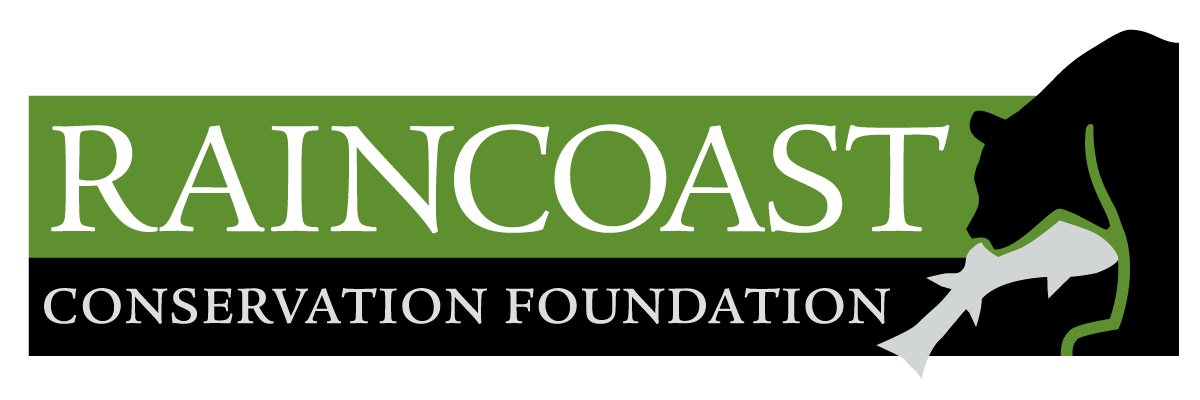Managing Salmon for Wildlife
Whether its bears, wolves or whales many coastal species have evolved to rely on annual returns of Pacific salmon. But how are the food needs of these animals considered in fisheries management or the benefits of salmon managed for coastal ecosystems? Bottom line: they aren’t.
How do salmon declines affect coastal bears? How is the low abundance of chinook affecting resident killer whales? And how much salmon biomass is required to sustain terrestrial species? These are questions many people are asking in light of the increasing number of salmon runs that fail to return as expected to fall spawning streams. Raincoast staff and scientists are addressing these issues as part of our Salmon for Wildlife Initiative.
BC’s resident killer whales rely on Chinook salmon

Resident killer whales come to British Columbia’s inside waters from late spring to fall primarily in pursuit of Chinook salmon. These fish comprise over 90% of their spring and summer salmon diet and their abundance is linked to killer whale mortality, birth rates and survival. The presence of Chinook at locations and times where they can be accessed by killer whales defines habitat that is critical to their growth and survival. The decline in Chinook numbers is an important factor in the endangered status of BC’s southern resident killer whales.
Raincoast and other conservation groups were represented by Ecojustice in a lawsuit that argued Fisheries and Oceans Canada was not protecting the critical habitat of these whales as they are mandated to do under Canada’s Species At Risk Act. Their obligation includes ensuring an adequate abundance of Chinook salmon, their favorite food. Raincoast argues that allocations for killer whales must be considered when harvest levels are being set.
Salmon Carnivore Program
 Referenced against historical and contemporary declines in coastal salmon runs, we suspect that bears and wolves now receive a fraction of the salmon they once did. Using hair collected from fur snagging stations, we use DNA, isotopes and hormones to track bear numbers, estimate salmon consumption, and elucidate the relationship between salmon and bear numbers. Hormonal assays give us information about potential stress, reproductive activity, and protein deprivation bears might show in response to poor salmon returns.
Referenced against historical and contemporary declines in coastal salmon runs, we suspect that bears and wolves now receive a fraction of the salmon they once did. Using hair collected from fur snagging stations, we use DNA, isotopes and hormones to track bear numbers, estimate salmon consumption, and elucidate the relationship between salmon and bear numbers. Hormonal assays give us information about potential stress, reproductive activity, and protein deprivation bears might show in response to poor salmon returns.
Current thinking in conservation science instructs salmon management to include the bears, wolves and other wildlife that have an evolutionary reliance on the annual pulse of nutrients and energy delivered via spawning salmon. Even the Department of Fisheries and Oceans Canada’s Wild Salmon Policy recognizes the need for management to transcend salmon ‘production’ alone and consider the needs of terrestrial species.

For this policy to be meaningful however, it requires fisheries managers to consider bears and wildlife by lowering catches and allowing more salmon to reach the rivers to spawn. Currently, humans engage in what ecologists call ‘exploitative competition’ – we capture salmon en route to spawning grounds before they can reach awaiting carnivores. Even salmon runs that spawn in protected watersheds and parks are subjected to exploitation by commercial fisheries at levels as high as 80 percent. Often, these parks were created to protect species such as grizzlies, black bears and wolves. As such, we suspect that grizzly bears in particular, receive a fraction of the salmon they are used to, which ultimately manifests in population declines. Not by ‘die-offs’, but through repeated years of low birth rates.
In some areas, we also believe it is time to establish truly protected salmon runs – runs that would be managed solely for their importance to wildlife and ecosystems. This would allow salmon to return to spawning grounds without encountering the nets and hooks of the Pacific salmon fleet. And those fish would then spawn in rivers that flow naturally without their watersheds logged, developed or otherwise impaired.

Of course, it is not just fishing nets and hooks that rob bears and other wildlife of their energy needs. Fish farms, climate change, degraded habitat, dams and diversions, and changing ocean conditions, even hatcheries, all influence salmon abundance. All human generated impacts that reduce salmon abundance must be addressed, however reducing or eliminating exploitation – on at least some runs – would have an immediate positive effect on coastal wildlife.

